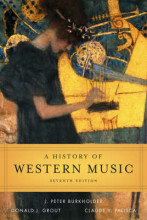Italy and Germany in the Late Seventeenth Century
7 important questions on Italy and Germany in the Late Seventeenth Century
Serenata and first composer of them
Alessandro Stradella was one of the first composers of them
Two types of sonatas ca. 1660
Sonata da chiesa (church sonata)
What were the typical performing forces for Baroque orchestras?
Violas
Cellos
Basso continuo
Sometimes bass viol doubled the cellos
- Higher grades + faster learning
- Never study anything twice
- 100% sure, 100% understanding
What were the four characteristics of the Italian Style at the end of the 1600s?
1. Solo forms highlighted individual performance.
2. Variety of melodic styles used in both vocal and instrumental music
3. Forms based on pattern of establishing a key, departing, then returning
4. Returning to opening material at the end of a movement
What period is considered a golden age of organ music in the Lutheran areas of Germany?
What are the basic structural components of the fugue?
Subject - begins on tonic
Answer - begins on dominant
Other voices alternate subject and answer,
then Cadence
Episodes - periods of free counterpoint between statements of the subject
Which Italian and French styles did German composers synthesize at the end of the 17th century that would lay the foundation for the extraordinary developments of the 18th?
France: suites for keyboard and orchestra
The question on the page originate from the summary of the following study material:
- A unique study and practice tool
- Never study anything twice again
- Get the grades you hope for
- 100% sure, 100% understanding
































